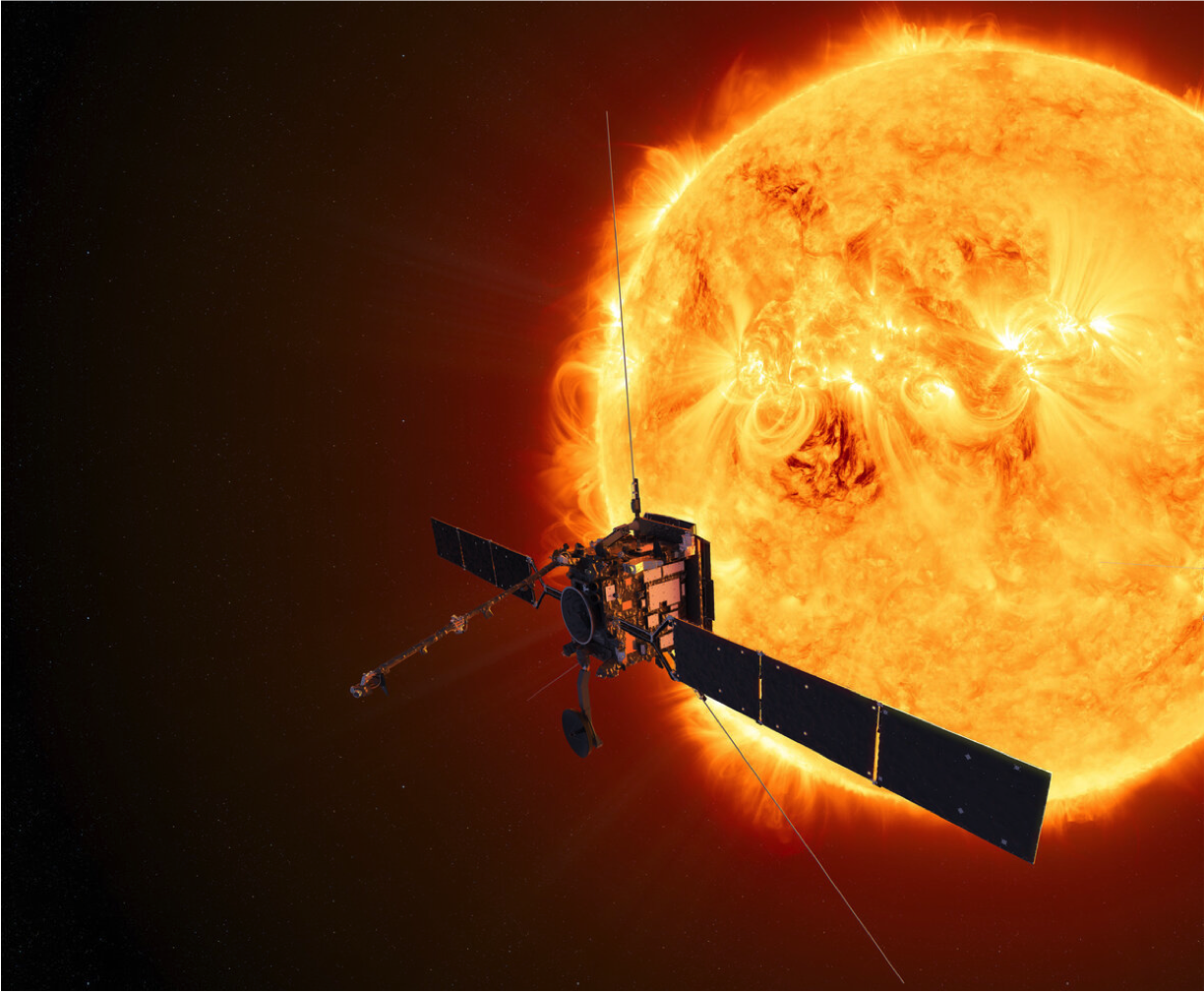At 5:03 CET on Monday 10th February, a NASA Atlas V4 11 rocket blasted off from Cape Canaveral, Florida, carrying with it ESA’s aptly named latest mission: Solar Orbiter. Within an hour, the spacecraft detached from the rocket, and began flying solo, carefully guided by a team on the ground in Germany. Since then, the mission has passed all scheduled hardware and software tests. Now, scientists are excited to start taking data.
Solar orbiter is carrying 10 different instruments that will be used to measure a variety of important properties of the sun, including the energy levels of particles it emits, the strength and structure of its magnetic field, and its emissions in the ultraviolet range. The spacecraft will use the gravitational fields of the Earth and Venus to reach an unusual orbit that will allow it to make measurements both in and out of the plane in which all planets orbit the sun.
Whilst this mission represents a fantastic engineering success in its own right, the scientific questions addressed by the project could offer some fundamental insights into the workings of our nearest star.
The existence of life on our planet is of course dependent on the energy generated by the Sun. Yet there is still much we do not know about this process, which has the power to tear apart our modern existence if it changes.
And this is where Solar Orbiter comes into play: In this mission scientists seek to elucidate this process by addressing four fundamental questions relating to the constant stream of particles bombarding our planet, known as the solar wind, as well as the complex magnetic field of the sun. These four questions are outlined in the following.
How does the solar dynamo work?
The solar dynamo is the name given to the process that generates the sun’s magnetic field. We know that it is the magnetic field that drives the solar wind and associated phenomena, so having an accurate theory of the dynamo will aid the understanding of these events.
The out-of-plane orbit of the spacecraft will allow measurements and images to be taken of the poles of the sun, something that has not been accomplished before. It is hoped that this will allow the development of theories describing the solar dynamo.
What drives the solar wind and where does the coronal magnetic field originate from?
The solar wind is comprised of a stream of charged particles, such as electrons, protons and alpha particles, released from the corona (upper atmosphere) of the sun at speeds between 250 and 750 kilometres per second. The particles are mostly deflected by our planet’s magnetic field, but can have both beautiful and destructive effects when they impact: the solar wind is responsible for the splendour of the aurora borealis and, likewise, for serious damage to satellites.

Previous ESA missions investigating the sun, such as ‘Cluster’ and ‘Double Star’, provided insights into the large-scale structure of the solar wind but failed to lead to a commonly accepted theory of its origin.
Whilst scientists are aware that the magnetic field of the corona is highly significant to the generation of solar wind, the details of how this works are still debated. However, by taking careful measurements of the corona’s magnetic field whilst simultaneously measuring the solar wind, the mission could help explain both the origin of the coronal magnetic field and its role in driving the solar wind.
How do solar transients drive space weather?
This question requires some unpacking. ‘Solar transients’ are events such as flares, coronal mass ejections and shock waves, all of which cause variations in the solar wind. This takes place in the heliosphere which is defined as the region of the solar system that is penetrated by the solar wind and forms a bubble around the sun with a radius approximately four times greater than the orbital distance of Pluto.
Solar transients lead to what is known as ‘space weather’ and have the potential to affect the Earth’s magnetic field and upper atmosphere.
Developing a better understanding of such events would allow physicists to predict future occurrences. Furthermore, this could aid our understanding of more distant stars that display similar transients.
How do solar eruptions produce the energetic particle radiation that fills the heliosphere?
During solar eruptions, our sun acts as the most powerful particle accelerator in the solar system, producing particles travelling close to the speed of light. Solar Orbiter is taking measurements of the particles involved in these emissions, whilst recording data and images of the region from which they originate. This could help reveal which of a number of competing mechanisms most accurately describes the process underpinning such events.
This is of particular importance to us here on earth since solar eruptions can have a big impact, from rerouting aircraft away from polar regions, to disrupting the hardware on satellites. Being able to understand and predict such events would have a huge impact on our ability to maintain our modern lifestyles, regardless of the weather in space.
…and when will we get the answers?
It is uncertain to what extent Solar Orbiter will be able to answer these questions. Yet if the mission continues to be as successful as it has been in the past few days, it seems promising that new light can be shed on some of the most fundamental processes in our solar system. The mission is due to last seven years, with a possibility for extension if the spacecraft continues to operate successfully.
Title image: Artistic impression of the Solar Orbiter. © Solar Orbiter: ESA/ATG medialab; Parker Solar Probe: NASA/Johns Hopkins APL





